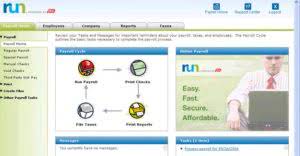
Shaun Conrad is a Certified Public Accountant and CPA exam expert with a passion for teaching. After almost a decade of experience in public accounting, he created MyAccountingCourse.com to help people learn accounting & finance, pass the CPA exam, and start their career. Federal Deposit Insurance Corporation (FDIC) insurance covers bank deposits for as much as $250,000 per bank per depositor. Because FDIC insurance is per depositor, if you had HVAC Bookkeeping a joint account with one co-owner, your deposit would be insured for as much as $500,000. Credit union deposits are similarly insured, covered by the National Credit Union Share Insurance Fund. Commercial banks typically have brick-and-mortar locations spread throughout the U.S., but they also make it easy to conduct most transactions online.

What is retail banking? Definition and meaning
In the banking industry, consumers also rely on the Federal Deposit Insurance Corp. (FDIC) to insure their bank deposits. As of March 31, 2023, the FDIC insured 4,672 institutions, commercial banks and savings banks. The total amount of assets the FDIC insured was $23.72 trillion and the total amount of loans and leases insured was $12.212 trillion. The specific identification is another inventory costing method that tracks the cost of each item you have in stock by assigning a different price to each item, usually with SKUs. This method helps businesses keep Certified Public Accountant track of every item in their inventory without grouping them.
#2 – Large Banks
For example, let’s say your business has a bin of 200 hair ties, each of which you and you purchased at different prices for a total of $40. Using the weighted average, you’ll divide the total cost of the hair ties by the number you purchased, which is 20 cents each. If you sold 120 of them, the cost of goods sold was $24, and you have $16 for the ending inventory. With the FIFO method, the cost of goods sold would be $40 because this was the price you purchased the first bags of chips. Your inventory value would be $70 since there were 10 bags left that you bought for $1 and 30 left that you bought for $2. The GlobalBanks editorial team comprises a group of subject-matter experts from across the banking world, including former bankers, analysts, investors, and entrepreneurs.

What is the difference between an investment and a retail bank?

This extension of credit can take the form of mortgages, auto loans, or credit cards and is an important facet of the economy as it provides liquidity to ordinary consumers, which helps the economy grow. Retail banking, meaning personal or consumer banking, is the collective banking and financial services used by individuals to manage their day-to-day financial requirements. Corporate banking is all about helping companies and big institutions with their money, while retail banking is for regular people. Retail banking takes care of people’s money, while corporate banking takes care of businesses’ money needs. As with many large commercial banks, JPMorgan Chase doesn’t pay super-competitive interest rates to retail customers. For example, as of early October 2024, the annual percentage yield (APY) on a one-year CD of $10,000 or less was 4%; many smaller banks and credit unions paid about 5% for a similar product.
Get up to $300 when you bank with SoFi.
The onset of the Coronavirus pandemic has certainly accelerated the demand for digital-yet-personal banking services. Therefore, several professionals choose retail banking jobs to provide customized monetary solutions. They’re simultaneously retail banks, commercial banks, and investment banks. You might be able to open a business account at the same retail bank that you retail account meaning use for your personal needs.
These services include basic bank accounts like checking and savings, basic services like debit cards and credit cards, and financing solutions like personal loans, home equity loans, and mortgages. JPMorgan Chase is the largest bank in the U.S., with $4.14 trillion in assets as of October 23, 2024. Services offered by retail banks include checking and savings accounts, mortgages, personal loans, credit cards, and certificates of deposit (CDs). An example of retail banking, also known as consumer banking, is when an individual opens a savings account at a local bank. The bank then allows them to deposit funds, withdraw money, and earn interest on their deposits. The same bank might also offer them a checking account for daily transactions, a mortgage to buy a home, and a credit card for everyday purchases.

Do You Want Help Opening Bank Accounts?
Most of us bank at a retail bank or retail division of a large commercial bank whether we realize it or not. • Retail banks focus on accessible services, offering features like online banking, investment products, and personalized customer assistance to help individuals manage their finances. Most consumers use local branch banking services, which provide onsite customer service for all of a retail customer’s banking needs. In the 21st century, a movement toward internet finance banking operations has also broadly expanded the offerings for retail banking customers. Several online banks now provide banking services to customers purely through Internet and mobile applications.
- In the U.S., the Office of the Comptroller of the Currency (OCC) is responsible for overseeing banks at the national level.
- Although there’s no precise definition, a community bank is generally defined as an institution with less than $10 billion in assets.
- Furthermore, they link straight to the bank account, and consumers can utilize them at Automated Teller Machines (ATMs).
- These loans certainly entail money borrowed from banks, online lenders, or credit unions to meet financial obligations.
- The facility is specially designed to take care of the personal financial needs of the retail customers, who are nothing but a part of the general public for everyday spending.
- A lot of financial services companies want to be their customers’ only place to go for private banking.
- Retail banks work hard to recruit customers from a very young age and hold on to them for the rest of their lives.

While services may include deposit accounts, these banks also may offer credit and asset management, lines of credit, payment processing, and tools that facilitate international trade. Retail banking is different from corporate banking, which is the part of the banking industry that serves large companies and corporate customers. Retail banks can be local community banks, online banks, or the divisions of large commercial banks.











